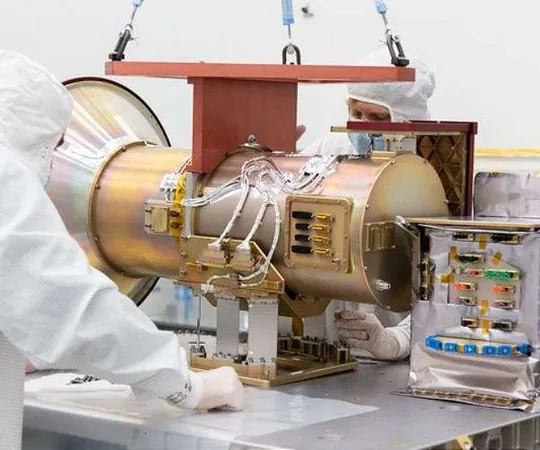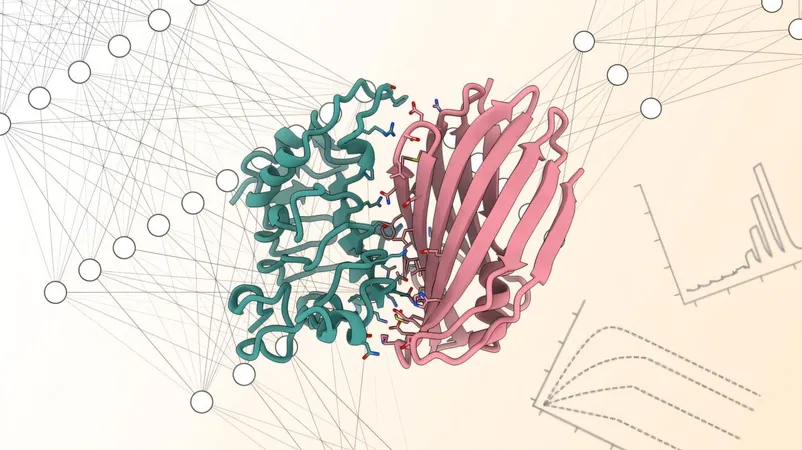
Revolutionary Fluid Control Method for Space Systems Unveiled by Tiny Wave Dynamics
2025-08-26
Author: Benjamin
Groundbreaking Research from the University of Mississippi
A team of scientists at the University of Mississippi has made a game-changing discovery in fluid dynamics that could revolutionize how liquids are managed in zero-gravity conditions. This innovative research addresses one of the trickiest challenges faced by space explorers.
The Science Behind Meniscus Manipulation
Led by Likun Zhang, a senior scientist at the National Center for Physical Acoustics, the research focuses on how waves of liquid interact with barriers in low-gravity settings. Co-author Zhengwu Wang, a fourth-year doctoral student, explains that surface tension rules in environments like the International Space Station. "The curvature of the water’s surface, or meniscus, around structures plays a significant role in wave dynamics," Wang notes.
The study, published in Physical Review Letters, reveals that minor adjustments to the meniscus can dramatically influence how much energy is transmitted through barriers. A slight curve in the meniscus increases energy flow, whereas a steeper curve drastically reduces it.
Tiny Changes, Massive Impact
Zhang highlighted the startling impact of these findings: "Only a tiny, 1.5-millimeter adjustment in the meniscus can reduce energy transmission from about 60% to just a few percent. It’s astounding how such tiny shapes can create huge effects!" This insight could enhance the efficiency of critical systems used by astronauts, like fuel storage and life support.
A Game Changer for Space Travel
Effective fluid control can make space systems lighter and more efficient, significantly benefiting long-term missions. "We’re uncovering small effects that, under normal circumstances, might seem trivial, but in microgravity, they could lead to massive efficiencies," Wang added.
Innovative Experimental Techniques
In their experiments, the researchers simulated low-gravity conditions by generating small surface waves and introduced partial barriers. By altering the barrier height and its water-attracting or repelling properties, they successfully manipulated the meniscus and energy transmission.
Broader Applications Beyond Space
The implications of this research extend beyond space travel. The findings could prove beneficial in earthbound industries, particularly in biomedical engineering and manufacturing, where microfluidic devices are essential. These devices facilitate fluid movement in channels as narrow as millimeters, applicable in technologies from 3D printing to DNA sequencing.
A Leap Forward in Fluid Dynamics
Zhang concludes, "This is the first experiment focused on this unique behavior in fluids, and it opens up new avenues for exploration in physics. We're now equipped to control fluid behaviors in innovative ways that were previously unimaginable." This groundbreaking work promises to pave the way for enhanced fluid management both in space and on Earth.









 Brasil (PT)
Brasil (PT)
 Canada (EN)
Canada (EN)
 Chile (ES)
Chile (ES)
 Česko (CS)
Česko (CS)
 대한민국 (KO)
대한민국 (KO)
 España (ES)
España (ES)
 France (FR)
France (FR)
 Hong Kong (EN)
Hong Kong (EN)
 Italia (IT)
Italia (IT)
 日本 (JA)
日本 (JA)
 Magyarország (HU)
Magyarország (HU)
 Norge (NO)
Norge (NO)
 Polska (PL)
Polska (PL)
 Schweiz (DE)
Schweiz (DE)
 Singapore (EN)
Singapore (EN)
 Sverige (SV)
Sverige (SV)
 Suomi (FI)
Suomi (FI)
 Türkiye (TR)
Türkiye (TR)
 الإمارات العربية المتحدة (AR)
الإمارات العربية المتحدة (AR)